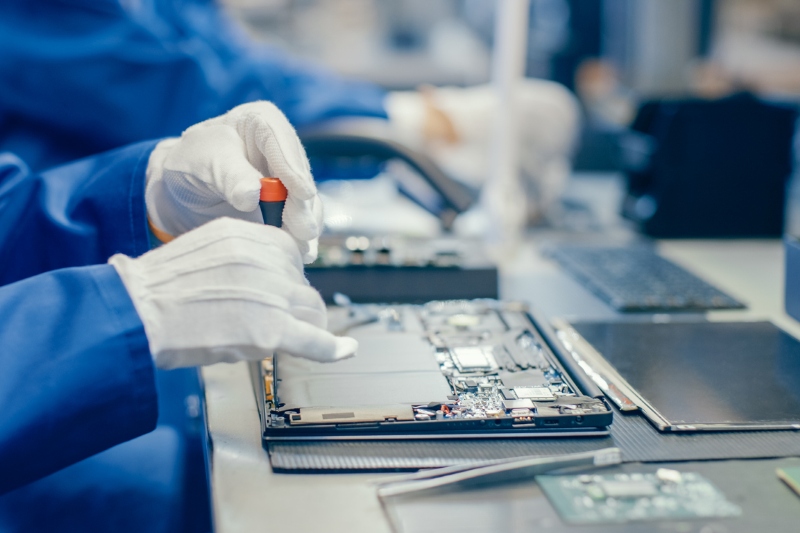The Rise of Advanced Manufacturing in Southeast Asia
Manufacturing in Southeast Asia is projected to grow by an additional USD 400 billion to USD 600 billion annually by 2030, according to Boston Consulting Group (BCG). This surge is driven by a large and young workforce, economic expansion, and trade integration, positioning the region as a key global manufacturing hub.
Key factors driving this growth include:
- A young and expanding population – Southeast Asia has a population of over 660 million with a median age of 30 years, younger than China (38) and Europe (44).
- A fast-growing middle class – The number of middle-income and affluent households in Vietnam, Indonesia, and the Philippines is expected to increase by 5% annually through 2030, driving demand for manufactured goods.
- A strong and integrated economy – ASEAN’s combined GDP exceeds USD 3 trillion, and the region is projected to become the world’s fourth-largest economy by 2030.
Trade Integration and Regional Competitiveness
Southeast Asia is highly integrated into the global economy through regional and international trade agreements, making it a strategic location for manufacturers:
- The ASEAN Economic Community (AEC) enables the free movement of goods, services, and investments within ASEAN.
- The Regional Comprehensive Economic Partnership (RCEP)—the world’s largest free trade agreement—connects ASEAN with China, Japan, South Korea, Australia, and New Zealand, easing trade barriers and improving supply chains.
- The Comprehensive and Progressive Agreement for Trans-Pacific Partnership (CPTPP) provides preferential access to North America and other key global markets, further strengthening Southeast Asia’s role in advanced manufacturing.
Why Companies Are Expanding Manufacturing in Southeast Asia
Global companies are shifting manufacturing operations to Southeast Asia, seeking to diversify beyond China due to rising costs, geopolitical risks, and supply chain disruptions. Countries such as Vietnam, Thailand, and Malaysia are emerging as major manufacturing hubs, while Singapore is a leader in high-tech, R&D-intensive production.
Additionally, Industry 4.0 adoption is expanding, with investments in automation, robotics, and AI-driven manufacturing to improve productivity. However, implementation levels vary, and companies are still navigating the transition to smart manufacturing.
Key Growth Areas in Advanced Manufacturing
1. Electronics Manufacturing
Electronics is a cornerstone industry in Southeast Asia, accounting for 20% to 50% of total exports across ASEAN. The region produces:
- A large share of the world’s consumer electronics, including televisions, computers, and smartphones.
- Over 80% of the world’s hard drives, primarily manufactured in Thailand, Malaysia, and the Philippines.
- Increasing volumes of semiconductors, as Vietnam and Malaysia strengthen their roles in global chip production.
2. Aerospace Industry
Southeast Asia’s aerospace sector is expanding rapidly, with growing demand for new aircraft driving:
- The development of new manufacturing and maintenance facilities in Singapore, Malaysia, and Thailand.
- Investments in electric and hybrid aircraft R&D, though large-scale production remains in the early stages.
- Growth in MRO (maintenance, repair, and overhaul) services, making the region a hub for aircraft servicing.
3. Automotive and Electric Vehicles (EVs)
ASEAN ranks as the seventh-largest automotive manufacturing hub worldwide, producing vehicles for both domestic markets and export to Australia, New Zealand, and the Middle East.
- With low car ownership rates, the automotive market is poised for significant growth in the coming decades.
- ASEAN is witnessing a shift toward electric vehicle (EV) production, particularly in Thailand, Indonesia, and Malaysia, which are offering incentives to attract EV manufacturers.
4. Petrochemicals and Bioenergy
Southeast Asia is a leading producer of petrochemical products, but the industry is evolving to include:
- High-value-added products, such as bioplastics and biofuels, in response to sustainability trends.
- Bioenergy development, particularly in Thailand and Indonesia, to support cleaner manufacturing practices.
- AI-driven innovations, still in early-stage adoption, helping optimize chemical production processes.
5. Food & Beverage Manufacturing
With Southeast Asia home to 8% of the global population but only 3% of the world’s agricultural land, food security is a priority. Governments and companies are investing in:
- Agri-food R&D hubs, such as Singapore’s leading research centers in alternative proteins and food sustainability.
- Export-driven food innovation, with Thailand’s food sector investing in automation and efficiency.
- Supply chain efficiency improvements in Vietnam and Indonesia, where food innovation aligns with national food security goals.
6. Medical Equipment and Healthcare Manufacturing
The medical sector is seeing strong growth, driven by:
- Aging populations and increasing demand for advanced medical technology.
- R&D investments in high-tech medical devices and pharmaceuticals.
- Medical tourism, particularly in Thailand and Malaysia, which is fueling demand for cutting-edge healthcare equipment and infrastructure.
Conclusion
Southeast Asia’s manufacturing sector is rapidly expanding, fueled by economic growth, trade agreements, and increased adoption of Industry 4.0 technologies. As companies look to diversify supply chains and tap into emerging consumer markets, the region presents significant opportunities for investment in electronics, aerospace, automotive, petrochemicals, food processing, and medical manufacturing.
With supportive trade policies and a skilled workforce, Southeast Asia is poised to become a global leader in advanced manufacturing, offering strategic advantages for companies seeking long-term growth.
